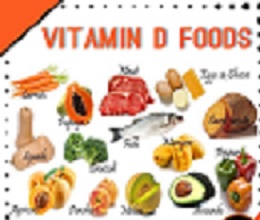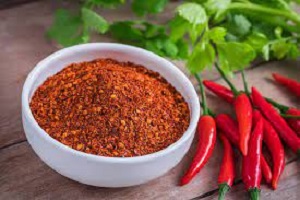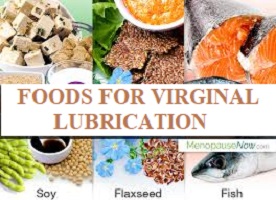Vitamin D Foods to Add to Your Diet
Top 10 Vitamin d Foods to Add to Your Diet.

Vitamin D is both a nutrient that we consume and a hormone that our bodies produce.
It is a fat-soluble vitamin that has long been known to aid the body’s absorption and retention of calcium and phosphorus, both of which are essential for bone formation.
Vitamin D is an essential vitamin that the body requires for calcium absorption, bone development, immune function, and inflammation relief among other benefits.
Table of Contents
What Is Vitamin D?
Vitamin D is a fat-soluble vitamin that is essential for many aspects of health.
It differs from other vitamins in that your body can produce the majority of what you require through exposure to sunlight, which is why it’s also known as the “sunshine vitamin.”
It’s also unique in that it acts in the body as a steroid hormone rather than just a vitamin. This is why it is used in everything from weight management to bone health, especially because it aids calcium absorption.
Getting enough vitamin D at any age may be associated with improved bone health, weight control, improved brain function, increased immune function, and a lower risk of certain types of cancer.
Deficiency of Vitamin D
A lack of Vitamin D can cause rickets, a weakened immune system, an increased risk of cancer, poor hair growth, and osteomalacia.
Vitamin D Excess
Excess vitamin D can cause the body to absorb an excessive amount of calcium, increasing the risk of heart disease and kidney stones.
The Vitamin D’s current daily value (DV) is 20 mcg (micrograms), and the toxicity threshold is thought to be 250 to 1000 mcg/day.
Vitamin D Foods
Vitamin D levels are sometimes expressed in IU (International Units). When this occurs, keep in mind that 1mcg=40IU for Vitamin D.
Because vitamin D is fat-soluble, you must consume fat to absorb it. Fish, mushrooms exposed to sunlight, fortified milk, fortified milk substitutes, fortified tofu, fortified yogurt, fortified breakfast cereals, fortified orange juice, pork chops, and eggs are all high in vitamin D.
Vitamin D is also produced by the body when exposed to sunlight and is thus known as the sunshine vitamin. This accounts for roughly 90% of our total vitamin D, with food accounting for the remaining 10%.
Depending on where you live, 20 minutes of sun exposure per day is sufficient to meet your vitamin D needs.
Top Calcium and Vitamin D Foods
Few foods contain vitamin D naturally, though some are fortified with the vitamin. Because it is difficult to consume enough vitamin D through food, most people prefer to take a supplement.
There are two types of vitamin D supplements: vitamin D2 (“ergocalciferol” or pre-vitamin D) and vitamin D3 (“cholecalciferol”).
Both are naturally occurring forms that are produced in the presence of ultraviolet-B (UVB) rays from the sun, hence the nickname “the sunshine vitamin,” but D2 is produced in plants and fungi and D3 in animals, including humans.
Top Foods for Calcium
The best way to increase your calcium intake is through diet. You’re probably aware that dairy products, such as milk, cheese, and yogurt, contain calcium.
Other calcium-rich foods include:
- Spinach
- Kale
- Okra
- Collards
- Soybeans
- White beans
- Some fish, like sardines, salmon, perch, and rainbow trout
- Foods that are calcium-fortified, such as some orange juice, oatmeal, and breakfast cereal
Importance of Vitamin D and Calcium
Vitamin D is required for calcium absorption in the body. This is essential for maintaining bone strength and skeletal integrity.
Getting enough vitamin D and calcium is essential for bone health and preventing diseases like osteoporosis, which is characterized by weak, brittle bones.
How Much Do You Require?
The Institute of Medicine recommends the following amounts of calcium and vitamin D per day.
How Much Do You Need?
Here’s how much calcium and vitamin D you need each day, according to the Institute of Medicine.
Calcium
- Children 1-3 years old: 700 milligrams (mg)
- Children 4-8 years old: 1,000 mg
- Children 9-18 years old: 1,300 mg
- Adults 19-50: 1,000 mg
- Women 51 to 70: 1,200 mg
- Men 51 to 70: 1,000 mg
- Women and men 71 and over: 1,200 mg
Vitamin D
- Age 1-70: 600 IU
- Age 71 and older: 800 IU
Your doctor may advise you to take more calcium and vitamin D, especially if you are deficient in these nutrients or are at risk of osteoporosis
People at risk of vitamin D deficiency
Some people will not produce enough vitamin D from sunlight because they receive little or no sunlight.
The Department of Health and Social Care recommends that adults and children over the age of four take a daily vitamin D supplement containing 10 micrograms of vitamin D throughout the year if they:
- Are not frequently outside – for example, If they are frail or housebound
- Are in an institution such as a care home
- Usually, wear clothes that cover up most of their skin when outdoors
If you have dark skin, such as if you are African, African-Caribbean, or South Asian, you may not produce enough vitamin D from sunlight.
Consider taking a daily vitamin D supplement containing 10 micrograms throughout the year.
Vitamin D-Rich Nutritious Foods

The top 10 foods highest in vitamin D by common serving size are listed below; for more information, see the nutrient ranking of 200 foods high in vitamin D.
Nutritious Foods That Are High in Vitamin D
Below is a list of the top 10 foods highest in vitamin D
Best Dietary Sources include:
- Oily fish – such as salmon, sardines, herring, and mackerel
- Red meat
- Liver
- Herring and sardines
- Canned tuna
- Mushrooms
- Egg yolks
- Vitamin d fortified foods – such as some fat spreads and breakfast cereals
- Another source of vitamin d is dietary supplements.
- Fortified milk
- Fortified milk substitutes (cow/soy milk)
- Pork chops
- Fortified tofu
- Fortified yogurt
- Cereal and oatmeal
- Fortified breakfast cereal
- Fortified orange juice
The Bottom Line
Increasing your intake of vitamin D-rich foods is one of the most effective ways to prevent deficiency and promote overall health.
Fish such as salmon, mackerel, and sardines are high in vitamin D, as are fortified dairy products, some mushrooms, eggs, caviar/fish roe, and fortified orange juice and cereals.
While vitamin D foods can help you meet your requirements, sunlight exposure is still the best way to keep your levels normal. It is most effective to spend 10 to 20 minutes in the sun at least several times per week.
You can also increase your intake by including a D3 supplement in your diet while still focusing on dietary sources.
FAQs
What food is highest in vitamin D?
The flesh of fatty fish and fish liver oils are the best sources. Egg yolks, cheese, and beef liver all contain trace amounts.
Certain mushrooms contain vitamin D2; additionally, some commercially sold mushrooms contain higher levels of D2 as a result of being intentionally exposed to high levels of ultraviolet light.
Which fruit is rich in vitamin D Food Chart?
Orange juice
| FOOD | STANDARD PORTION | Vitamin D (IU) |
| Fruit | ||
| Orange juice, 100%, fortified | 1 cup | 100 |
| Other Sources | ||
| Almond beverage (almond milk), unsweetened | 1 cup | 107 |
How can I increase my vitamin D naturally?
- Spend time in sunlight. Vitamin D is usually called “the sunshine vitamin” because the sun is one of the best sources of this nutrient
- Consume fatty fish and seafood
- Eat more mushrooms
- Include egg yolks in your diet.
- Eat fortified foods
- Take a supplement
- Try a UV lamp
Which vegetable is high in vitamin D?
Top Foods for Calcium and Vitamin D
- Soybeans
- Kale
- Spinach
- Okra
- Collards
- White beans.
- Some fish, like sardines, salmon, perch, and rainbow trout.
- Foods that are calcium-fortified, such as some orange juice, oatmeal, and breakfast cereal.
Is 2 eggs a day enough vitamin D?
Eggs contain one of the highest amounts of vitamin D of any food, with two eggs providing 82% of your daily recommended intake.
Do carrots contain vitamin D?
Because vitamin D is found in a few foods naturally, many foods are fortified with it. Sunlight is another source of vitamin D.
Although carrots lack vitamin D, they do contain other nutrients that are beneficial to your health.
Are bananas high in vitamin D?
There is no vitamin D in banana. However, they are high in magnesium. What’s more, guess what?
One of the many reasons you need magnesium is that once your vitamin D is in your bloodstream, magnesium activates it, making magnesium a must-have in order to reap the many benefits of vitamin D.
What are the signs of a vitamin D deficiency?
Symptoms of low vitamin D may include:
- Fatigue
- Inability to sleep well.
- Aching or pain in the bones.
- Feelings of sadness or depression.
- Loss of hair.
- Muscle wasting.
- Appetite loss.
- Being prone to illness.
What causes a lack of vitamin D?
The two most common causes of vitamin D deficiency are:
You are not getting enough vitamin D from your diet or from sunlight. Your body isn’t absorbing or utilizing vitamin D properly.
What can I drink to increase my vitamin D levels?
Plant-based milk fortified with vitamin D, such as soy and almond, can provide comparable amounts.
Enjoy a cold 8 oz glass of your favorite fortified milk straight, in a smoothie, or in your favorite coffee drink.
How can I get enough vitamin D each day?
Although vitamin D is not naturally present in many foods, it can be obtained through fortified milk, fortified cereal, and fatty fish such as salmon, mackerel, and sardines.
When direct sunlight converts a chemical in your skin into an active form of vitamin D, your body produces it as well (calciferol).
What is the healthiest way to get vitamin D?
According to Kennedy, healthy vitamin D food sources include fatty fish such as cod and salmon, yogurt, fortified milk, and orange juice.
Do oats contain vitamin D?
Oatmeal. Oatmeal, like most whole grains, is an excellent source of vitamin D.
Aside from that, oats are high in essential minerals, vitamins, and complex carbohydrates, all of which our bodies require to stay healthy and fit.
Is vitamin D present in boiled eggs?
Hard-boiled eggs are also high in vitamins A, D, calcium, and iron. Because eggs contain saturated fats, they can raise your LDL cholesterol levels.
How can I increase my vitamin D and B12?
Eat more vitamin B12-containing foods, such as;
- Beef, liver, and chicken, to increase your intake.
- Trout, salmon, tuna, and clams are examples of fish and shellfish.
- Breakfast cereal with added vitamins.
- Reduced-fat milk, yogurt, and cheese.
- Eggs
Are potatoes rich in vitamin D?
While potatoes lack vitamin D, they are high in several other nutrients.
Potatoes are high in potassium, an electrolyte necessary for fluid balance; iron, a mineral that aids in oxygen transport to all cells; and B vitamins, which work together to keep your metabolism running.
What to do when vitamin D is low?
Here are three ways to increase your intake:
- Eat foods high in vitamin D, like fish or fortified breakfast foods (milk, cereals, and orange juice).
- Get vitamin D from moderate sunlight exposure each day.
- Take a vitamin D3 supplement or cod liver oil.
Vitamin D sources ~ Good sources of vitamin D
- Oily fish – such as salmon, sardines, herring, and mackerel.
- Red meat.
- Liver
- Egg yolks.
- Fortified foods – such as some fat spreads and breakfast cereals.
Which fruit is rich in vitamin D?
Oranges
Oranges are high in vitamin D because their juice is fortified with calcium and vitamin D. This is one of the best vitamin D sources for people who are lactose intolerant and cannot consume milk or dairy products.
Vitamin D foods for vegetarians
Vegan sources of vitamin D
- Soy milk that has been fortified. One cup of vitamin D-fortified soy milk contains approximately 2.9 mcg (116 IU) of vitamin D.
- Mushroom
- Cereals fortified with vitamins and minerals.
- Fortified orange juice, almond milk, and rice milk.
- Sunshine
What is a vegetarian’s source of vitamin D?
Mushrooms are the only adequate non-animal source of vitamin D, aside from fortified foods.
When exposed to UV light, mushrooms, like humans, can synthesize vitamin D.
Mushrooms, on the other hand, produce vitamin D2, whereas animals produce vitamin D3.
Vitamin D-rich fruits and vegetables Top Calcium and Vitamin D Foods near me
- Okra
- Kale
- Spinach
- Collards
- Soybeans
- White kidney beans.
- Fish such as sardines, salmon, perch, and rainbow trout.
- Calcium-fortified foods, such as orange juice, oatmeal, and breakfast cereal.
The Vitamin D tablets ~ which tablet is best for vitamin D?
- Pure Encapsulations D3 10,000 IU.
- NOW Foods D3 10,000 IU.
- Pure Encapsulations Vitamin D3 (Vegan) Liquid.
- HUM Nutrition
- Nordic Naturals Zero Sugar Vitamin D3 Gummies 1,000 IU.
- Thorne Vitamin D/K2.
- Designs for Health Liposomal D Supreme.
- NOW Foods Chewable Vitamin D3 5,000 IU.
The Vitamin D deficiency
A lack of vitamin D can cause bone density loss, which can contribute to osteoporosis and fractures (broken bones).
Severe vitamin D deficiency can also lead to the development of other diseases. It can cause rickets in children.
Rickets is a rare disease in which the bones soften and bend.
What are the symptoms of vitamin D deficiency? The warning signs of vitamin D deficiency?
Fatigue. Bone ache. Muscle aches and cramps are all symptoms of muscle weakness. Changes in mood, such as depression.
Rickets symptoms include the:
- Incorrect growth patterns caused by bowed or bent bones;
- Muscle weakness; and Bone pain.
- Joint deformities
How can I quickly boost my vitamin D levels?
- Spend time in the sun. Because the sun is a source of vitamin D, it is often referred to as “the sunshine vitamin.” because the sun is one of the best sources of this nutrient.
- Consume fatty fish and seafood.
- Eat more mushrooms.
- Include egg yolks in your diet.
- Eat fortified foods.
- Take a supplement.
- Try a UV lamp.
Vitamin D Supplement ~ what is the purpose of vitamin D supplement?
Vitamin D serves several functions. Perhaps the most important are calcium and phosphorus absorption regulation and normal immune system function
Getting enough vitamin D is important for normal bone and tooth development, as well as improved resistance to certain diseases.
How to Get Vitamin D When is the Best Time to Get Vitamin D?
Conclusions: As a result, at this latitude, exposure to sunlight between 11 a.m. and 2 p.m. will promote vitamin D production in the skin all year.
Calcium and vitamin D foods ~ Top Foods for Calcium and Vitamin D
- Spinach
- Kale
- Collards
- Okra
- Soybeans
- White kidney beans.
- Some fish, such as sardines, salmon, perch, and rainbow trout
- Foods that are calcium-fortified, such as some orange juice, oatmeal, and breakfast cereal
What food is highest in vitamin D?
Salmon, mackerel, and sardines are among the oily fish that are the best nutritional sources of vitamin D. Liver, red meat, and egg yolks are further sources. Certain foods, such as plant-based milks, fat spreads, and breakfast cereals, also contain vitamin D added to them. Verify the product’s information to verify if this applies to the items you purchase.
What is the fastest way to increase vitamin D?
For most people to generate enough Vitamin D, 10 to 30 minutes in the sun between 10 AM and 3 PM, at least twice a week, is sufficient. The precise amount of time required varies depending on skin type, season, latitude, and altitude. Skin Contact: Give your skin a lot of exposure to the sun.
Is 2 eggs a day enough vitamin D?
Are Eggs Vitamin D Rich? 8.2µg, or 82% of the recommended daily requirement, of vitamin D may be found in a serving of two eggs. One of the best foods to eat for vitamin D is eggs.
How can I increase my vitamin D in 7 days?
Ways to Increase Your Vitamin D Levels
- Go Outside More Often. If the weather permits, the Arthritis Foundation advises spending a little while in the sun every day—never more than 30 minutes in direct sunlight.
- Take a seat near a window.
- Consume More Fish.
- Increase the Amount of Foods in Your Diet High in Vitamin D.
- Consume a supplement of vitamin D.
Can vitamin D levels rise in a week?
official response. Although it can take up to a week for increased exposure or intake of vitamin D to show up in a blood test, there are three major strategies to fast enhance your vitamin D levels: Increasing the amount of foods you eat that are vitamin D-fortified or naturally high in vitamin D
Can vitamin D increase in a week?
official response. The body’s levels of vitamin D usually increase after a few weeks of taking regular supplements. After a few weeks, blood levels of 25(OH)D should rise by 10 ng/ml for every 1,000 IU of vitamin D3 taken daily.
How can I get a full day of vitamin D?
- Take time out in the sun. Since sunshine is one of the best sources of vitamin D, it’s common to refer to vitamin D as “the sunshine vitamin.”
- Eat seafood and fatty fish.
- Consume extra mushrooms.
- Eat egg yolks as part of your diet.
- Consume meals fortified.
- Swig an elixir.
- Give a UV lamp a go.
Vitamin D vegetables: What vegetables are high in vitamin D?
Best Foods for Vitamin D and Calcium
Foods fortified with calcium include oatmeal, breakfast cereal, sardines, salmon, perch, and rainbow trout; spinach; kale; okra; collards; soybeans; white beans; and several types of seafood.
Vitamin D-rich fruits and vegetables: Which fruit has the most vitamin D?
- Oranges. Orange juice is enhanced with calcium and vitamin D, making it one of the fruits high in vitamin D.
- Eggs. When eaten whole, eggs are also a fantastic source of vitamin D.
- Fish. Omega 3 acids and vitamin D are both abundant in fish oils.
- Dairy.
- Liver oil from cod.
- Uncooked Shellfish.
- Kale.
- The banana.
Vegetarian meals high in vitamin D
Vegetarians can benefit greatly from foods high in vitamin D, including milk, paneer, cheese, soy milk, soy beans, spinach, oranges, bananas, and mushrooms.
Vitamin D tablets: Can I take vitamin D tablets daily?
For the majority of people, taking 10 micrograms of vitamin D each day is sufficient if you decide to take supplements. Vitamin D should not be taken in excess of 100 micrograms (4,000 IU) per day since this may be hazardous. This pertains to children between the ages of 11 and 17 as well as adults, including older people and those who are pregnant or nursing.
Vitamin D sources: Do you get vitamin D from the sun?
Getting enough vitamin D can be achieved most naturally through regular sun exposure. Several times a week, try to obtain 10 to 30 minutes of midday sunshine to maintain healthy blood levels. Darker-skinned people might require a bit more than this.
Vitamin D3 deficiency symptoms: Symptoms when vitamin D is low
- Exhaustion.
- Having trouble falling asleep.
- Ache or soreness in the bones.
- Depression or depressed mood.
- Hair fall.
- Weakness in the muscles.
- Appetite loss.
- Falling ill more frequently.
How to get vitamin D from the sun
Getting enough vitamin D can be achieved most naturally through regular sun exposure. Several times a week, try to obtain 10 to 30 minutes of midday sunshine to maintain healthy blood levels. Darker skinned people might require a bit more than this. Your skin’s sensitivity to sunlight should determine how long you expose it for.
Vitamin D supplement
Is it appropriate to take daily vitamin D supplements?
Vitamin D is usually regarded as safe when taken in recommended dosages. On the other hand, overdosing on vitamin D supplements might be hazardous. When taking more than 4,000 IU of vitamin D per day, adults, pregnant women, and nursing mothers may experience nausea and vomiting. Children 9 years of age and older may also experience this.
Vitamin D Vegetables and Fruits
Vitamin D is primarily obtained through exposure to sunlight, as the skin produces this vitamin in response to UVB radiation. However, there are a few foods, mainly fortified ones, that naturally contain vitamin D or are enriched with it. While fruits and vegetables are not significant sources of vitamin D compared to other food groups like fatty fish and fortified dairy products, here are some plant-based sources that contain small amounts of vitamin D:
Mushrooms
Some varieties of mushrooms, particularly those that have been exposed to UV light during growth or processing, can naturally contain small amounts of vitamin D. Examples include shiitake mushrooms, maitake mushrooms, and portobello mushrooms.
Fortified Foods
Certain fruits and vegetables may be fortified with vitamin D. This means that vitamin D is added to the food during processing to increase its content. Common fortified foods include fortified plant-based milk alternatives (such as almond milk, soy milk, or oat milk), fortified orange juice, and fortified cereals. Be sure to check the product labels to see if they contain added vitamin D.
Avocado
Avocado is a nutrient-rich fruit that contains small amounts of vitamin D, along with other essential vitamins and minerals. While not a significant source of vitamin D compared to other foods, avocados can still contribute to overall nutrient intake.
Spinach
Spinach is a leafy green vegetable that contains a small amount of vitamin D, along with other nutrients like vitamin A, vitamin C, and iron. While spinach doesn’t provide a significant amount of vitamin D compared to other sources, it can still contribute to overall vitamin and mineral intake.
Kale
Like spinach, kale is a leafy green vegetable that contains a small amount of vitamin D, as well as other nutrients like vitamin K, vitamin A, and calcium. While kale is not a major source of vitamin D, it can still contribute to overall nutrient intake.
It’s important to note that while these fruits and vegetables contain small amounts of vitamin D, they are not as potent a source as other food groups like fatty fish, fortified dairy products, and fortified plant-based alternatives. Additionally, vitamin D absorption from plant-based sources may be less efficient compared to sources like animal products and fortified foods. Therefore, if you’re looking to increase your vitamin D intake, it’s essential to consider a variety of sources and consult with a healthcare professional or dietitian for personalized recommendations.


